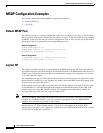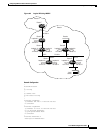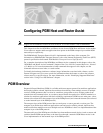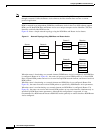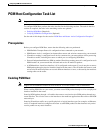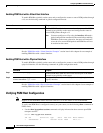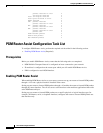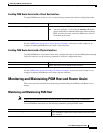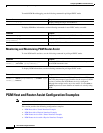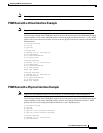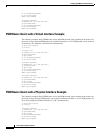
Configuring PGM Host and Router Assist
PGM Host Configuration Task List
IPC-495
Cisco IOS IP Configuration Guide
PGM Host Configuration Task List
Note Support for the PGM Host feature has been removed. Use of this feature is not recommended.
To configure PGM Host, perform the tasks described in the following sections. The tasks in the first
section are required; the tasks in the remaining section are optional.
• Enabling PGM Host (Required)
• Verifying PGM Host Configuration (Optional)
See the end of this chapter for the section “PGM Host and Router Assist Configuration Examples.”
Prerequisites
Before you configure PGM Host, ensure that the following tasks are performed:
• PGM Reliable Transport Protocol is configured on hosts connected to your network.
• PGM Router Assist is configured on intermediate routers and switches connected to your network.
• IP multicast routing is configured on all devices connected to your network that will be processing
IP multicast traffic, including the router on which you are configuring PGM Host.
• Protocol Independent Multicast (PIM) or another IP multicast routing protocol is configured on each
PGM interface in your network that will send and receive IP multicast packets.
• A PGM multicast virtual host interface (vif) is configured on the router (if you do not plan to source
PGM packets through a physical interface installed on the router). The vif enables the router to send
and receive IP multicast packets on several different interfaces at once, as dictated by the multicast
routing tables on the router.
Enabling PGM Host
Note Support for the PGM Host feature has been removed. Use of this feature is not recommended.
When enabling PGM Host on your router, you must source PGM packets through a vif or out a physical
interface installed in the router.
Sourcing PGM packets through a vif enables the router to send and receive PGM packets through any
router interface. The vif also serves as the interface to the multicast applications that reside at the PGM
network layer.
Sourcing IP multicast traffic out a specific physical or logical interface type (for example, an Ethernet,
serial, or loopback interface) configures the router to send PGM packets out that interface only and to
receive packets on any router interface.




